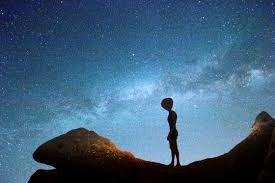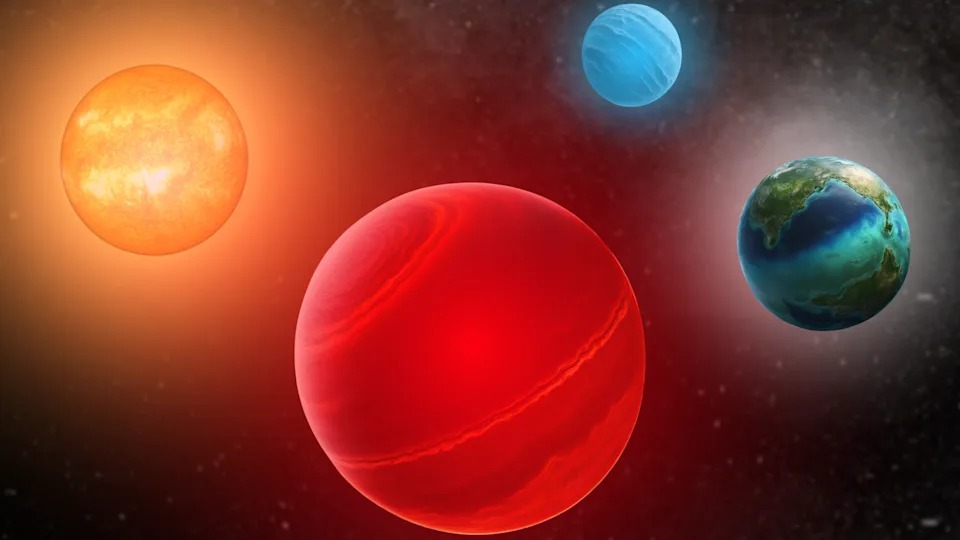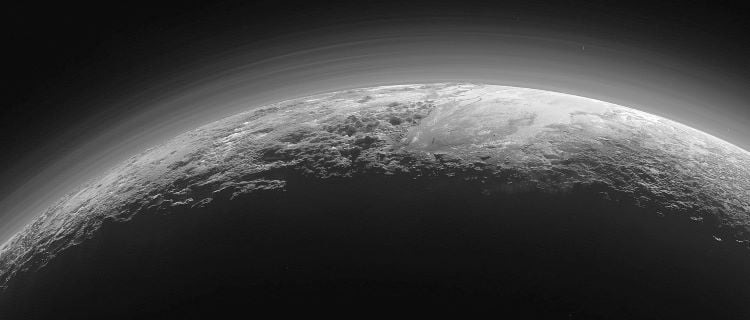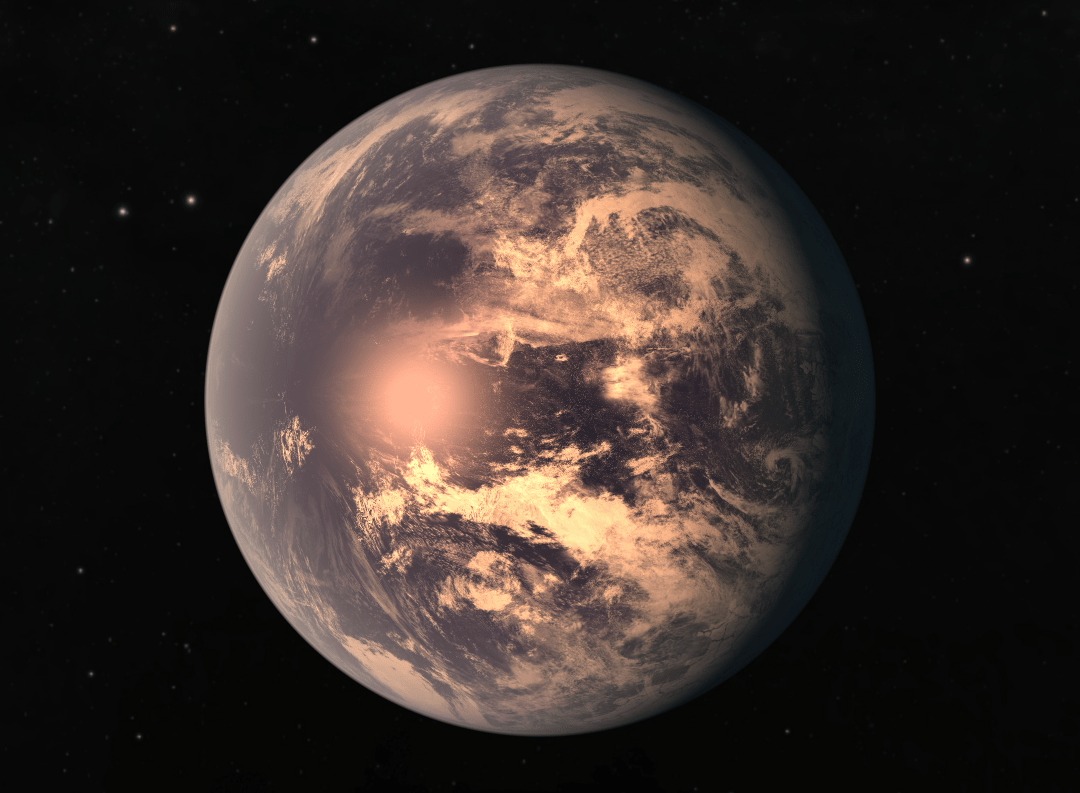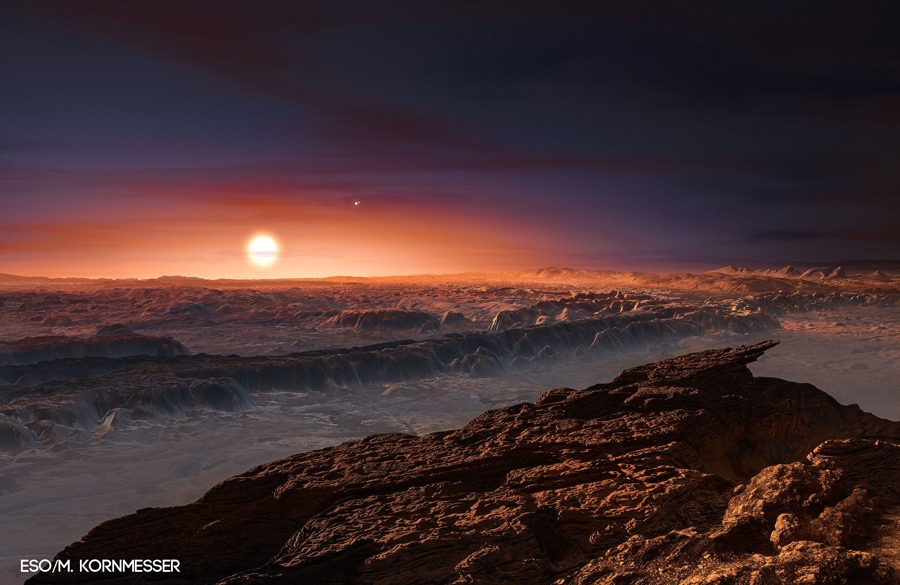For thousands of years, humans have looked up at the stars and asked one of the biggest questions of all: “Are we alone?” Today, this question is no longer just for philosophers and dreamers. Thanks to new, powerful telescopes and robotic missions, it is a real question that scientists are actively working to answer. We are no longer just guessing; we are searching.
The search for alien life is a top priority for space agencies and scientists around the world. But space is so vast. Where do you even begin to look? The answer lies in searching for places that have the ingredients for life as we know it. This article will take a deep dive into the most promising places in our solar system and beyond, exploring the planets and moons that might be our best hope for finding a cosmic neighbor.
The Goldilocks Zone: A Recipe for Life
When scientists search for life, they have to start with what they know. The only life we have ever found is on Earth, and life here requires one key ingredient: liquid water. Water is essential for all living things. It dissolves nutrients, helps with chemistry inside cells, and helps living things get rid of waste.
Because of this, scientists have come up with a concept called the habitable zone, or the “Goldilocks Zone.” This is the area around a star where the temperature is just right—not too hot and not too cold—for liquid water to exist on the surface of a planet. Every star has a habitable zone, but its size and location depend on how big and how hot the star is. A hotter star has a habitable zone that is farther away, and a cooler star has a habitable zone that is closer. The search for life starts with finding planets that are in this special zone.
The Search in Our Own Backyard: Alien Life in the Solar System
Before we look for life in distant galaxies, we have to look in our own cosmic neighborhood. Our solar system has a few places that are very promising for finding some kind of life, even if it is just tiny microbes.
Mars
Mars has been a top candidate for finding life for a long time. Today, Mars is a cold, dry, and dusty place. But we have found a lot of evidence that billions of years ago, Mars was a much warmer and wetter planet. Rovers like Curiosity and Perseverance have found signs of ancient riverbeds, deltas, and lakes.
While the surface of Mars today is a very harsh place, with a lot of radiation from the Sun, there is still a possibility that life could exist. Scientists believe that if life ever existed on Mars, it would be found under the surface, where it would be protected from the radiation. The rovers are now searching for signs of ancient microbial life in the rocks and soil. A future mission is even planned to bring Martian soil samples back to Earth for a more detailed look.
Europa (Jupiter’s Moon)
Europa is one of Jupiter’s many moons, and it is a place that scientists are very excited about. The moon is covered in a thick layer of ice, which makes it look like a giant white marble. But under this ice, scientists believe there is a huge ocean of salty water.
This ocean is kept liquid by the heat from Jupiter’s gravity. As Europa orbits the giant planet, the pull of gravity stretches and pulls at the moon, creating heat inside of it. This heat is enough to keep the ocean from freezing. The ocean is also likely in contact with a rocky seafloor, and this could provide chemicals and energy for life, just like the deep-sea vents on Earth’s ocean floor. A future mission called the Europa Clipper will fly by the moon many times to study its ocean and look for a place to land.
Enceladus (Saturn’s Moon)
Enceladus is a small, bright moon of Saturn. It is like a cosmic snowball. Just like Europa, scientists believe that Enceladus has a huge ocean of liquid water under its icy crust. The moon is famous for something called geysers. These are huge jets of water vapor and ice particles that shoot out from the south pole of the moon.
The Cassini spacecraft flew through these geysers and found that they contain a lot of interesting chemicals, including organic molecules. This is a huge discovery because it means that there is a way for the material from the ocean to get out into space. This is like a welcome sign for future missions. A spacecraft could fly through these geysers to sample the ocean inside without ever having to land on the moon.
The Search Beyond Our Solar System: Exoplanets
The search for alien life is not limited to our solar system. With the help of powerful telescopes, we have discovered thousands of planets orbiting other stars. These planets are called exoplanets.
The Kepler and James Webb Telescopes
For years, the Kepler Space Telescope was a champion in finding exoplanets. It looked at a single patch of sky for years, looking for stars that dimmed as a planet passed in front of them. It found thousands of planets, and it showed us that there are more planets in our galaxy than there are stars.
Now, we have a new and even more powerful telescope: the James Webb Space Telescope (JWST). The James Webb is looking at the light from these distant planets to find out what their atmospheres are made of. This is a huge step forward in our search for alien life.
Searching for Biosignatures
A biosignature is a chemical that can be a sign of life. A good example is oxygen. On Earth, our atmosphere has a lot of oxygen because of plants and other life. If we find a planet with a lot of oxygen in its atmosphere, it could be a sign that there is life there.
The James Webb Space Telescope uses a technique to study the light from a star as an exoplanet passes in front of it. By looking at the light that passes through the planet’s atmosphere, scientists can figure out what chemicals are in it. Finding chemicals like oxygen, methane, or a combination of chemicals that should not exist together could be a sign of life.
The Drake Equation and The Fermi Paradox
The search for alien life has led to some interesting ideas and questions.
The Drake Equation
In the 1960s, a scientist named Frank Drake came up with a way to guess how many civilizations there might be in our galaxy. His equation, called the Drake Equation, uses a few key numbers, like the number of stars in our galaxy, the number of stars that have planets, and the number of planets that have life. While we don’t know the exact numbers, the equation shows that it is possible for there to be many civilizations in our galaxy.
The Fermi Paradox
This brings us to another question, called the Fermi Paradox. The paradox asks, “If there are so many stars and planets, and the Drake Equation says that there should be many civilizations, then where is everyone?”
There are a few possible answers to this paradox:
- Life is very rare: It could be that life is much, much rarer than we think.
- We are looking in the wrong place: It could be that aliens are not sending out radio signals and are not interested in visiting us.
- Civilizations don’t last long: It could be that civilizations destroy themselves before they have a chance to travel to the stars.
The Fermi Paradox is a thought-provoking question that we are still trying to answer.
Conclusion
The question of “Are we alone?” is no longer a fantasy. The search for alien life is a real and active field of science. Scientists are looking in our own solar system, at places like Mars, Europa, and Enceladus, and they are using powerful telescopes to study the atmospheres of exoplanets for signs of life. The next few decades will be a very exciting time, as we will get better and better at answering this question. The universe is a vast and amazing place, and it seems very unlikely that we are the only ones in it. We have the technology to find our cosmic neighbors, and it is possible that the answer to this question will be found in our lifetime.







